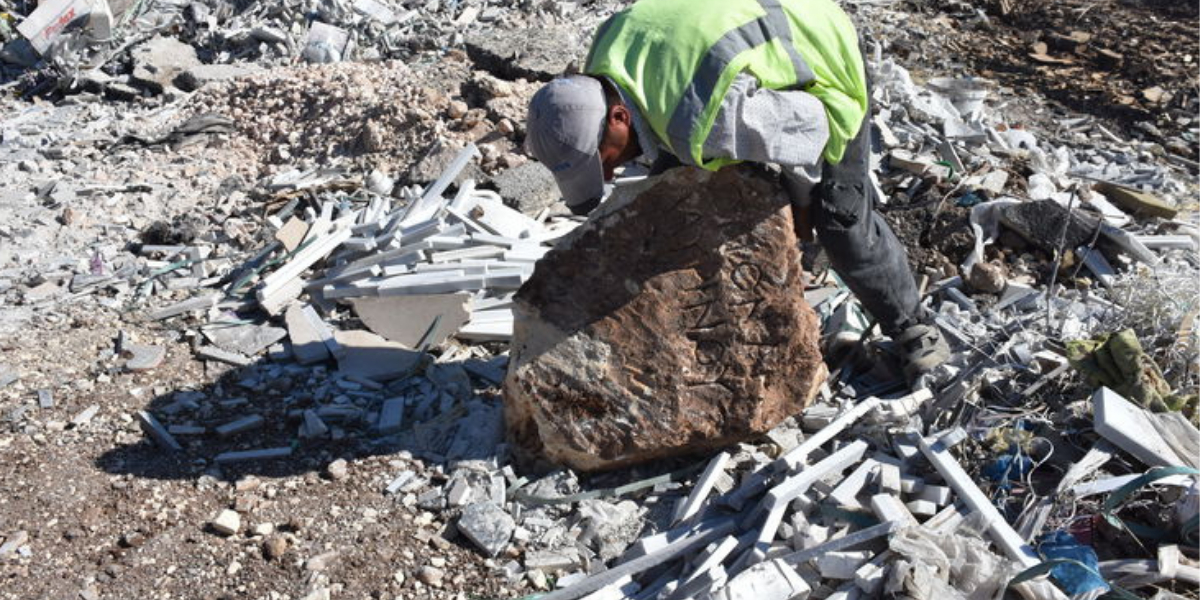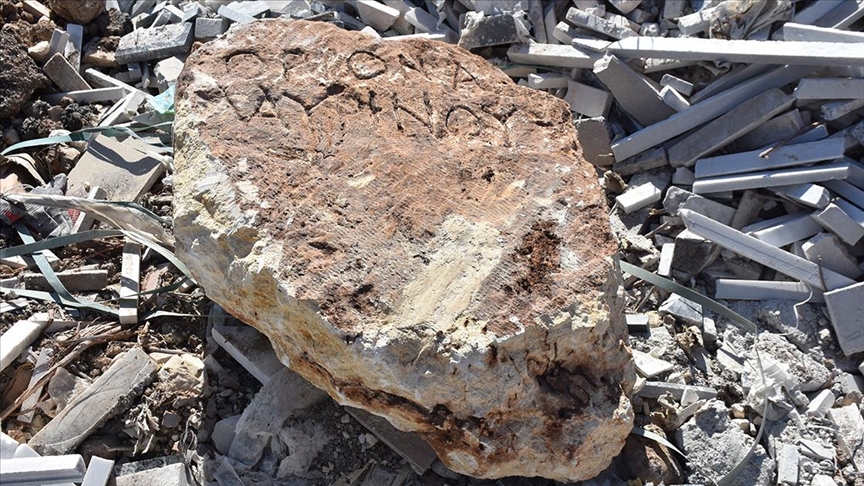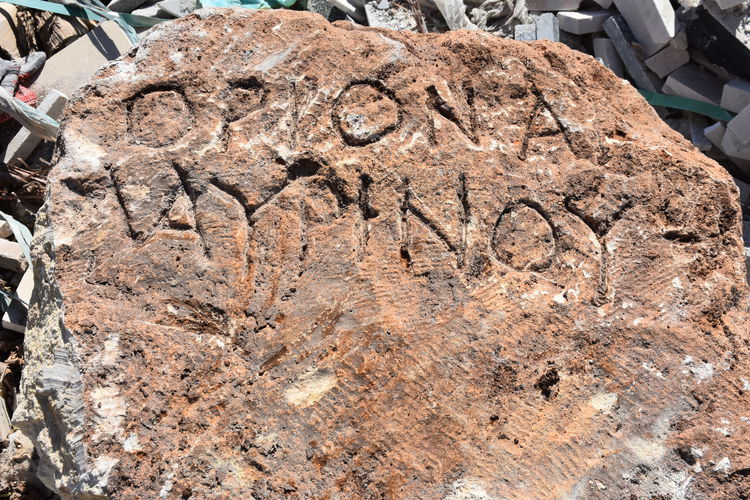
1800-year-old Roman border stone found during infrastructure works
During infrastructure renovation works in Adıyaman, a digger operator found a boundary stone marking a special area belonging to the Roman period.
The boundary stone was determined to be 1800 years old.
The Roman Empire used boundary stones to effectively manage its territory and define its borders. Boundary stones can be considered a highly developed geographical information system within the limits of the technology of the time.

Roman border stones are usually obelisks made of durable materials (such as marble, granite) with various inscriptions and symbols on them.
Usually erected to document the power of the empire and to prevent border disputes with neighboring states, the stones are inscribed with the time the stone was erected, the name of the emperor, the region where the border passes, and sometimes the two administrative units separated by the border.

The border stone in Adıyaman, on the other hand, marks a special land. The border stone was found 1.5 meters below the ground.
In the first examination of the experts of Adıyaman Museum Directorate, it was determined that the piece of stone is a border stone that defines a special area.
The teams determined that the boundary stone dates back to the 2nd century A.D. Roman period and took the stone to the museum.
Cover Photo: Fevzi Kemal Karagöz
You may also like
- A 1700-year-old statue of Pan unearthed during the excavations at Polyeuktos in İstanbul
- The granary was found in the ancient city of Sebaste, founded by the first Roman emperor Augustus
- Donalar Kale Kapı Rock Tomb or Donalar Rock Tomb
- Theater emerges as works continue in ancient city of Perinthos
- Urartian King Argishti’s bronze shield revealed the name of an unknown country
- The religious center of Lycia, the ancient city of Letoon
- Who were the Luwians?
- A new study brings a fresh perspective on the Anatolian origin of the Indo-European languages
- Perhaps the oldest thermal treatment center in the world, which has been in continuous use for 2000 years -Basilica Therma Roman Bath or King’s Daughter-
- The largest synagogue of the ancient world, located in the ancient city of Sardis, is being restored











Leave a Reply